12 min to read
What Is Wearable Technology & How Does It Work?
Wearable Technology/Wearables Wearable technology is a great boon to society as well as technology alike. Wearable technology has numerous expandable applications, having enormous potential to grow on gigantic levels of innovation. The very first wearable technology device was invented by math professor Edward Thorp in the 1960s. And since then it’s no looking back for this magic technology. Wearable technology is at the forefront of the Internet of things (IoT), as it has been quickly adopt
Wearable Technology/Wearables
Wearable technology is a great boon to society as well as technology alike. Wearable technology has numerous expandable applications, having enormous potential to grow on gigantic levels of innovation. The very first wearable technology device was invented by math professor Edward Thorp in the 1960s. And since then it’s no looking back for this magic technology.
Wearable technology is at the forefront of the Internet of things (IoT), as it has been quickly adopted in smart devices and computers. Wearable Technology (Wearables)is a type of electronic device that is worn as accessories that are embedded in clothing, implanted in the user’s body, and sometimes even tattooed on the skin. Wearable technology has greater advantages and implementations in navigation systems, healthcare, and advanced textiles.
These devices are hands-free gadgets with practical daily life uses like monitoring your pulse rate or keeping a tab on your daily-life activity and are powered by microprocessors. Also, these devices have the enhanced ability to send and receive data via the Internet.
Wearables are electronic devices incorporated into daily use products that are comfortably worn on a body with added enhancements for tracking much big data information on a real-time basis. They are equipped with specially designed motion sensors that can capture snapshots of your day-to-day activity and update that information by syncing with mobile devices or laptop computers.
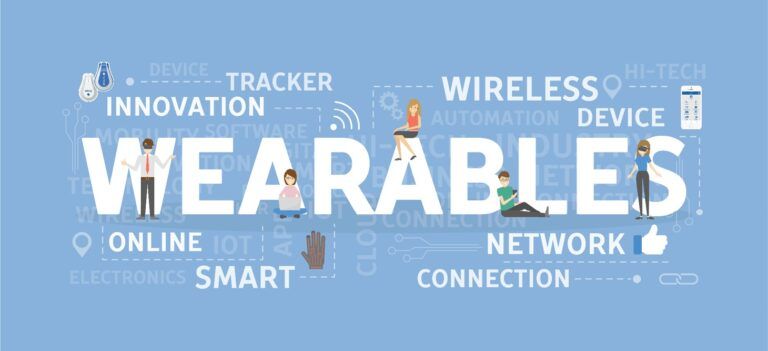
In earlier days, the usage of the computer was limited to working sitting at a desk all day. Slowly, technology enabled us all to stroll around with our laptops, and today we are witnessing the age of wearable technology.
Thanks to wearable technology, we can now crunch bits and bytes!
The Discovery of smartphones was supposedly the biggest ‘it’ thing innovation of this generation. But, hold on guys! The age of wearable technology has finally arrived to revolutionize our lives, with it being integrated into our shoes, eyeglasses, earrings, clothing, gloves, and watches. Smart devices like ‘Wearable Motherboards’ or ‘Smart Shirts’ are being used to monitor the health and well-being of the patients and send back information to the hub station in real time.
Long before these wearable devices entered consumer markets, it was extensively used by military forces for security and medical purposes. With superior batteries, greater processor speed, non-stop Internet connectivity, and smarter software programming, wearable technology have mammoth potential to serve society as well as earn bigger revenues in businesses.
What are Wearable Sensors
Wearable sensors are integrated into wearable objects or bodies to monitor health or to provide medically relevant data for care.
Check this list of useful daily-life possibilities and activities using wearable technology:
- A wearable technology-embedded yoga outfit can monitor your condition and provide instant feedback.
- Devices embedded in watches and jewellery can monitor your complete health conditions, and communicate alerts to you and your physician.
- Audio video sensors laden firefighting jackets are used to track the vital signs and exact locations of squad members to maintain tactical effectiveness and their safety.
- People can keep tabs on their messages with Bluetooth rings.
- A pair of Google Glasses can execute all sorts of smartphone-like activities.
- In addition, wearables are used for tracking activities in animals.
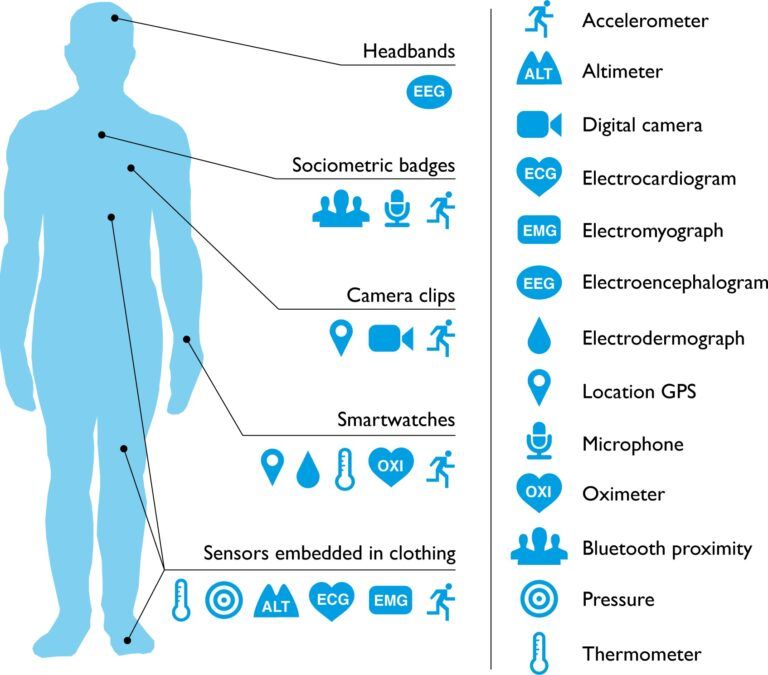
Specialized and Practical Applications
After being in existence for many years, wearable technology is progressing from consumer accessories to more specialized and practical applications.
Like:
- Microchip implants are now used to replace keys and passwords. These chips are embedded in a fingertip and use near-field communication (NFC) or radio-frequency identification (RFID). Such chips are quite similar to the ones used to track lost pets/ animals.
- RFID chips are seriously considered for keeping track of the whereabouts of US army troops around the world.
Common examples of wearable technology:
- AIR Louisville have specially designed wearable devices to monitor local air quality, and pollutant level and identify hotspots for citizens with respiratory problems.
- Cyrcadia Health has developed iTBra to detect early signs of breast cancer.
- Smart tattoos with flexible wearable sensors are being developed to monitor heart rates and other brain functionality
- A smartwatch for people with Parkinson’s disease tracks symptoms and tracks the data for personalized healthcare solutions.
- Child monitoring devices laced with GPS are another great example of wearable technology.
- Smart jewellery such as rings, wristbands, watches, and pins.
- Fitness trackers that monitor things like physical activity and vital signs use wireless technology to provide apps with the required data storage, processing, and reporting.
- Smart clothing with built-in technology can perform a variety of tasks including fitness or health monitoring, interacting with phones and other devices, and changing fabric characteristics to suit the user’s preference, activity, or environment.
Wearable Technology turning the table in healthcare
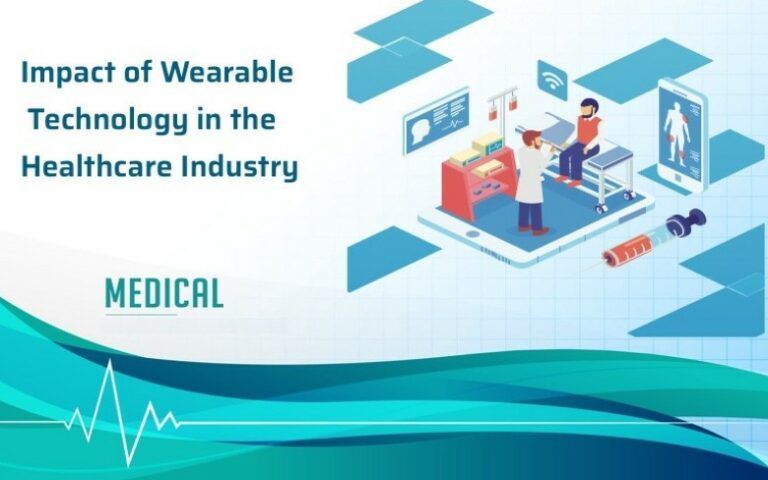
Wearable technologies can be innovative solutions to healthcare problems, some wearable technology applications are designed for the prevention of diseases and maintenance of health, such as weight control and physical activity monitoring.
The actual usability of this life-altering application is found in medical devices. Wearable technologies enable the continuous monitoring of human physical activities and behaviours, as well as physiological and biochemical parameters during daily life.
In recent years we have seen rapid development of many innovative wearables/ wearable sensors and these are considered a great asset for medical and healthcare uses.
These are used to measure data including vital signs like:
- Heart rate
- Blood oxygen saturation
- Blood pressure
- Posture
- Physical activities through the use of electrocardiogram (ECG), ballistocardiogram (BCG) and other devices.
- Body temperature
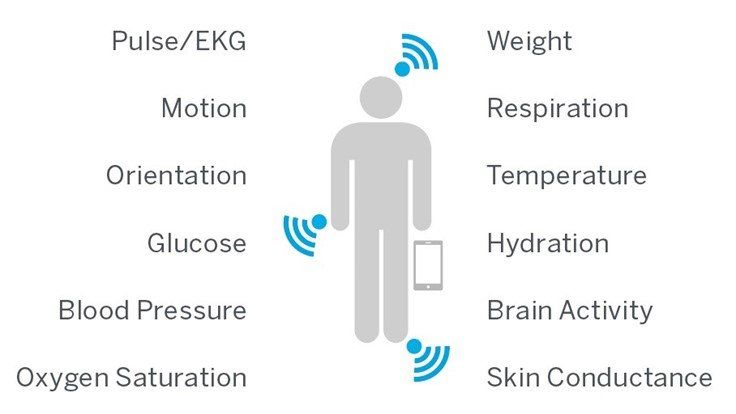
Wearable devices and data analysis algorithms are used together to conduct a variety of gait assessment tasks. The latest trends in medical monitoring devices and wearable health technology have been developed to monitor walking patterns, including accelerometers, multi-angle video recorders, and gyroscopes. And wearable photo or video devices provide additional clinical information.
In addition, wearable devices are used for patient management and disease management set ups. And these wearable applications directly impact clinical decision-making. Also, it is predicted by many researchers across the globe that wearable technologies will improve the quality of health care in conjunction with cost-effectiveness.
Most wearables give storage of pieces of information to be able to track later, which is a great resource in itself as this gives the user the liberty to set short-term and long-term goals to monitor their progress.
Wearables are like walky-talky alarm clocks providing instant messages and reminders by tracking our activities and sending real-time notifications to change our activity for betterment. For example, many wearables provide alerts on when to stand, run/ walk or fix our eating times. Henceforth, serving as a great tool of encouragement and motivation.
Some wearables are accustomed to in-built heart monitors that provide real-time readings of heart rate. While there have been cases of this feature being effective and useful in helping to save lives, many wearable devices have shown incorrect measurements of heart rates, especially during exercise.
Please note: Although these wearables are useful medical products it’s advisable to not use them for diagnosis or treatment of any type of medical concerns as they show inaccurate results too.
Medical wearables
Many popular wearables, like Fitbit and the Apple watch, have become extremely popular only because of their usability and unique feature of helping us improve our fitness levels and general health condition.
After witnessing the success stories of these medical wearables, many stalwart companies are considering creating specialized medical wearables for a specified medical condition. For example, medical wearables to monitor and solve a particular health ailment are being conceptualized.
It may take a while before we see this superior technology hit the market but it has the potential to help many lives struggling with serious health ailments.
For example:
- To supply insulin and monitor blood sugar levels, an artificial pancreas is being developed by scientists. If it happens, it will be the biggest relief news for diabetic patients.
- To track blood analysis, the effects of drugs, and the monitoring of other vital organs, skin-embedded wearables are being developed. This would be another great achievement of the healthcare industry as all types of medical activities be smoothly monitored.
How Wearable Technology Works
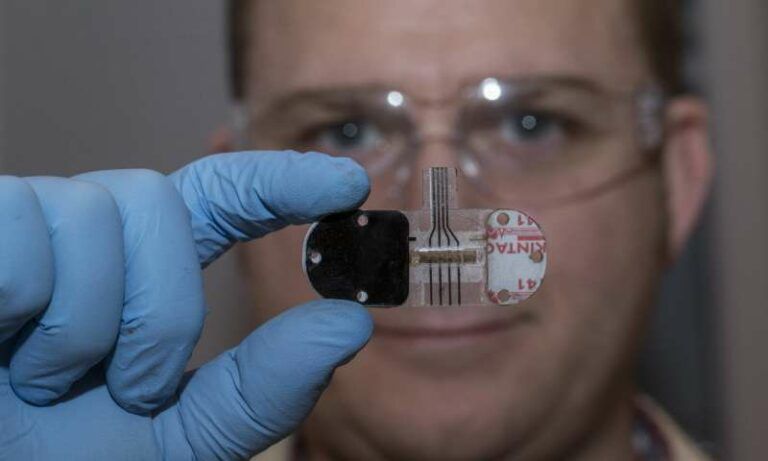
The growth of mobile networks enabled the development of wearable technology. In the most basic sense, we have to understand that wearable technology is that technology that has devices attached to the clothes we wear.
- Sensors can also be attached to a wearable device to allow them to monitor various activities in the area. Most sensors can track motion, brain activity, heart activity, and muscle activity. We can mostly see them in health-oriented devices.
- Miniature computers are also inside some wearable devices, similar to how smartphones have miniature processors inside of them. These are found in smartwatches and other wearables that are supposed to help us interact with other objects in the vicinity.
Key Challenges of Wearables
The major key challenge faced by wearable technology is getting sustainable customer engagement because many of these electronic gadgets have a shorter shelf life. There are many examples of wearable devices which were had impressive designs and functionality, yet they bombed and failed to create a long-lasting impact on the user’s lives, behaviours, and habits.
Here are some of the functional reasons which put the user off the device:
- Difficult to sync with smartphones
- UX issues
- Uncomfortable design
- Poor battery life
- Inferior quality
Another major turn-off is the security of information
At the moment, most of the data that’s available via wearables isn’t valuable enough for hackers to pursue. But as wearables and their capabilities continue to evolve, they are more prone to getting tracked by higher-priority targets. Of course, it serves a positive purpose to supply information, but as with all big data, there’s also a chance it could be misused.
Here are a few of the major risks:
- Many wearables tend to have little to no security measures for keeping their data safe. The fact that much of the data is unencrypted and that most of these devices use Wi-Fi or Bluetooth connections to transmit data gives easy access to cyber criminals.
- It’s important to consider how this information becomes big data to be collected and used by companies and governments. This means, whether you like it or not, that your tracked information could be used for marketing or health purposes.
How do wearables affect our daily lives?
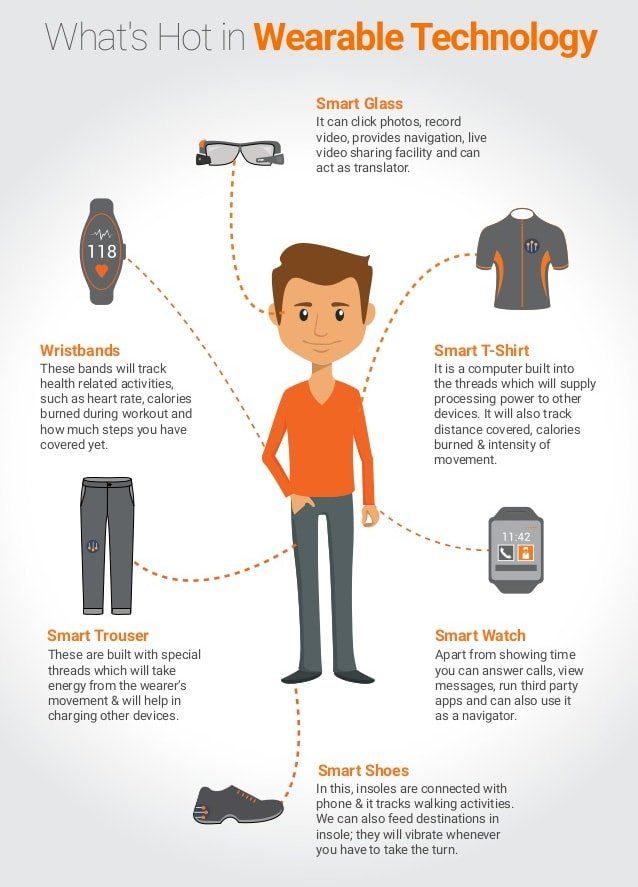
Wearable technology has the potential to change our lives and society to a greater extent by allowing us to get ourselves monitored under a certain specific system. In just a few years, wearable technology has become the talk of the town, from being non-existent to being everywhere. Because of this sudden spike in popularity, wearable technology aims to smoothly enter the daily lives of individuals and become a functional part of their daily life.
Wearable technology eyeing to influence the areas of health and medicine, fitness, aging, disability, education, transportation, enterprise, finance, gaming, music, etc. both financially and as a serving technology.
The hands-free nature of wearable computing devices is making it a winner everywhere, be it businesses, sports, entertainment, education, IT, etc. Tracking the emergency and rescue team becomes easy, making the workplace more efficient and safe. Hands-free access to important data and information through smart glasses and smartwatches helps researchers, engineers, and technicians to be more efficient at their work.
What does the future hold for wearables?
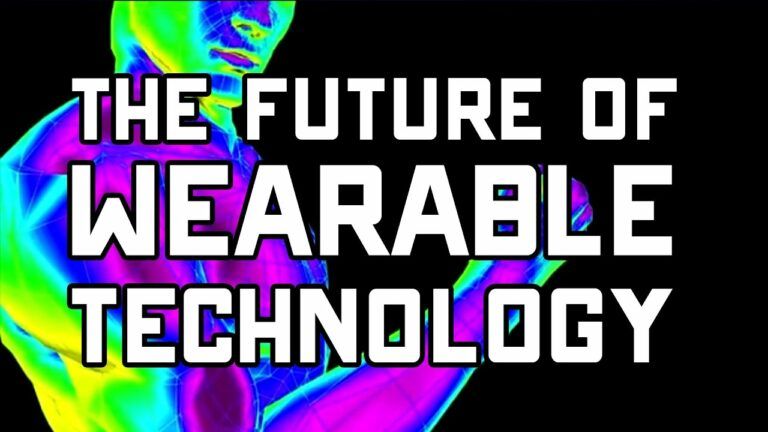
It’s predicted that wearables will only continue to grow in popularity, so naturally, companies are finding new and innovative ways to apply them to our everyday lives.
Wearable technology is making innovations daily, especially in the healthcare industry, where they’re going a step forward than fitness trackers and are making sleek and smart healthcare trackers with superior quality wearable sensors. These could be used to monitor things like blood pressure, vital signs, or blood sugar levels for diabetics.
Also, smart hearing aids and glasses to measure vision performance are being made easily available to medical professionals and the common citizens. Also, the trends have shown a fairly larger degree increase in the sales of pet trackers, smart jewellery, and AR/VR headsets that are continuing to grow and gain momentum.
Advantages of wearable technology
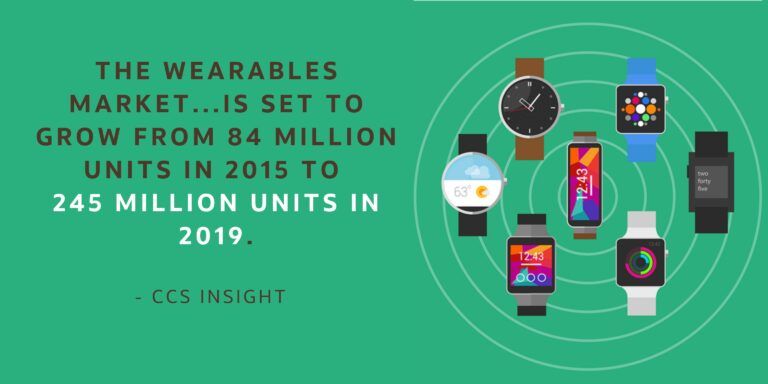
In the last decade, only wearable technology has exponentially grown and both consumers and companies are beginning to use various devices for a variety of applications like activity trackers, smartwatches, and smart clothing.
Wearable technology provides us with the ability to monitor our fitness levels, track our location with GPS, and view text messages more quickly. And the best part about these wearables is that most of the devices allow us to do this all hands-free. Additionally, they are portable too.
Technological advancements aim to make our lives smoother and easier and wearable technology is also going a notch up higher by providing several benefits throughout the day in the following ways:
1. Wearable Technology Keeps Us Fit
Some of the most-used wearable technologies aim to make users healthier in their day-to-day life. 71% of Americans say that wearable technology has improved their health.
Let’s check out this most popular fitness band Fitbit Flex-The bracelet comes with many monitoring features to help you create goals and improve your fitness by tracking your daily life activity levels, sleep cycle, and your nutrient intake. The key advantage of this fitness band is its advanced functionality of tracking your progress and sending alerts on goals to better fitness levels.
By tracking your steps, calories, or the distance you travel during a day, Fitbit keeps tabs on your physical activity. It also keeps a track of your calories spent.
The Fitbit Flex
This bracelet has a unique feature to detect when the user is in a lighter sleep cycle and then starts to gently wake you up by vibrating during the sleep cycle.
Also, Fitbit syncs with your smartphone to view graphs and data from your device. Since gadgets and apps like this tend to use a lot of mobile data, it’s advisable to have wireless Internet at home to cut the amount of data used.
The Lumo Back–
Another interesting device is the Lumo Back, which can track sleep movement and body posture. Thimble Bioelectronics is currently developing a wearable pain relief that will be transmitting electric currents to chronic pain spots. It means that we will be healing pain in the same way that we treat a cut by putting on a bandage.
Swallowable sensors– One such sensor by Proteus Health makes use of an Ingestion Event Marker which is a tiny chip embedded in a pill that reacts with stomach fluid to send a time-stamped identification signal to monitor heart rate, body position, and other activity levels of the user.
2. Wearable Technology Saves Lives
Many elderly patients now wear heart monitors and GPS location devices that alert caregivers when some mishap occurs or they are in some trouble. And certain types of wearable Remote Patient Monitoring devices can even alert caregivers if the patient experiences a fall or some other unpleasant condition occurs.
These devices provide the extra benefits of maintaining independence, preventing complications, and minimizing personal costs for patients.
Another interesting device is the LifeShirt which is a specially curated garment with sensors to monitor the vital signs and 30 other important biometric readings of chronically ill, elderly, cardiac, and other patients with life-threatening sicknesses.
3. Authentication
Wearables also seem to be headed in the direction of authentication as a means of doing things like unlocking your home, getting into concerts, and purchasing things at the store without going through the tedious checkout process.
Disney currently uses a wearable in its parks called the MagicBand that gives customers access to rides, hotel rooms, etc. in addition to providing a variety of other useful features as well.
If wearables are allowed to become an essential way of authenticating experiences, they have a huge potential to change the way we communicate in our surroundings by speeding up our daily life processes. For example, visits to the hospital or security clearances, etc., are essentially superior technology temporary kinda tattoos that can carry and transfer information to other smart devices like phones and scanners.
Cons of wearable technology
- Wearables tend to have a fairly shorter battery life. For example, some devices like the simpler Fitbit trackers can last for several days but some of the more advanced wearables like the Apple Watch will only last for a day or so.
- Most people complain about the regular need to charge and remove it for the same, so the developer community is working on the possibility of wireless charging options.
- And most importantly, these wearables cannot be trusted to measure medical conditions data as they are notorious for showing false readings. This inaccurate data reading is fatal for heart patient conditions.
KEY TAKEAWAYS
- Wearable technology is an important category of the Internet of things with life-changing applications in medicine and other fields.
- The growth of mobile networks enabled the development of wearable technology.
Wrapping Up
Wearables take technology from the screen into real-world scenarios, bringing fresh and innovative questions for designers to think about as well as challenges to overcome. However, it is thrilling to have a great opportunity to assist in shaping the future of this technological revolution. Our codersera team is here to help you in any way.
FAQ
Q1. What do you mean by a wearable computing device?
Ans- It comprises smart technology that you can wear on your body.
Q2. What are wearable electronics?
Ans- It comprises smart devices that you can simply wear on your body.
Q3. What do you mean by wearable technology in healthcare?
Ans- Wearable technology works well in the healthcare space. Suppose, fitness and sleep trackers such as Embrace assist in recording and sleep patterns, providing the person who is wearing useful health data.
🚀 Try Codersera Free for 7 Days
Connect with top remote developers instantly. No commitment, no risk.
Tags
Trending Blogs
Discover our most popular articles and guides
10 Best Emulators Without VT and Graphics Card: A Complete Guide for Low-End PCs
Running Android emulators on low-end PCs—especially those without Virtualization Technology (VT) or a dedicated graphics card—can be a challenge. Many popular emulators rely on hardware acceleration and virtualization to deliver smooth performance.
Android Emulator Online Browser Free
The demand for Android emulation has soared as users and developers seek flexible ways to run Android apps and games without a physical device. Online Android emulators, accessible directly through a web browser.
Free iPhone Emulators Online: A Comprehensive Guide
Discover the best free iPhone emulators that work online without downloads. Test iOS apps and games directly in your browser.
10 Best Android Emulators for PC Without Virtualization Technology (VT)
Top Android emulators optimized for gaming performance. Run mobile games smoothly on PC with these powerful emulators.
Gemma 3 vs Qwen 3: In-Depth Comparison of Two Leading Open-Source LLMs
The rapid evolution of large language models (LLMs) has brought forth a new generation of open-source AI models that are more powerful, efficient, and versatile than ever.
ApkOnline: The Android Online Emulator
ApkOnline is a cloud-based Android emulator that allows users to run Android apps and APK files directly from their web browsers, eliminating the need for physical devices or complex software installations.
Best Free Online Android Emulators
Choosing the right Android emulator can transform your experience—whether you're a gamer, developer, or just want to run your favorite mobile apps on a bigger screen.
Gemma 3 vs Qwen 3: In-Depth Comparison of Two Leading Open-Source LLMs
The rapid evolution of large language models (LLMs) has brought forth a new generation of open-source AI models that are more powerful, efficient, and versatile than ever.